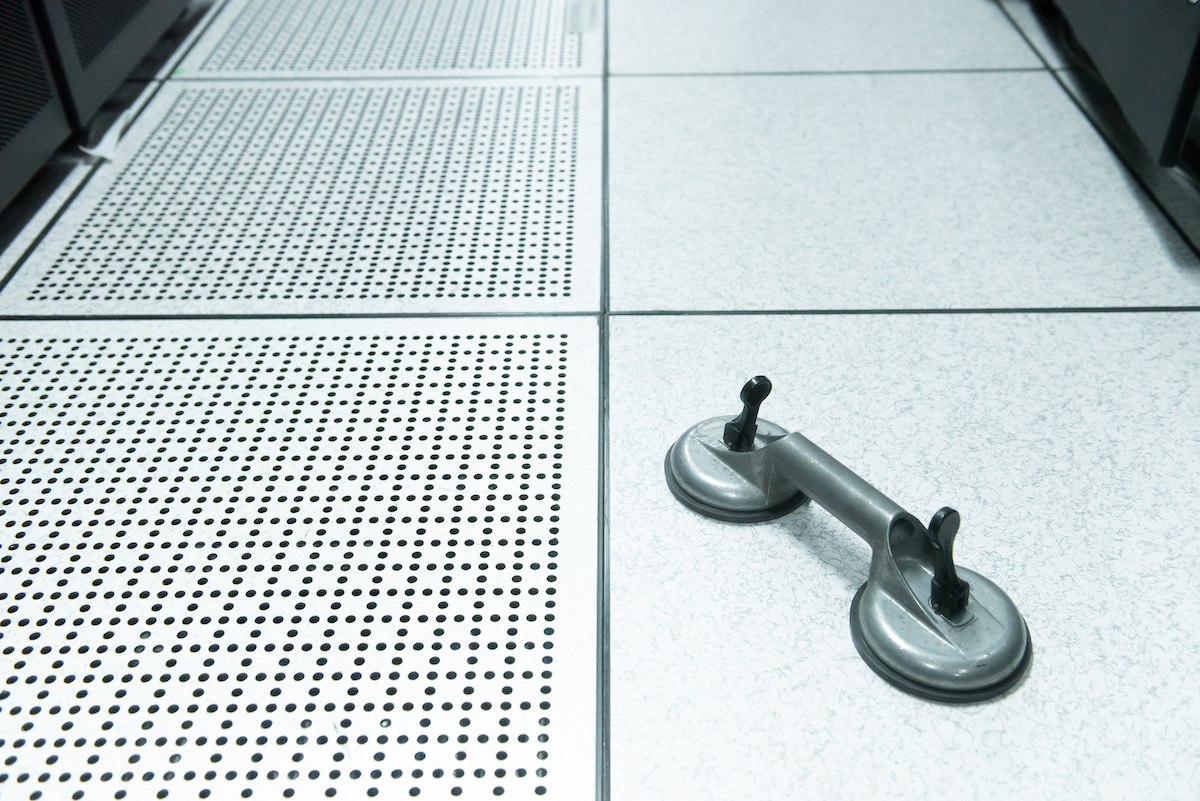Perforated Tile Placement: Why the Right Location Matters17 min read

It’s common knowledge that perforated tiles are a vital aspect of the cooling process in any raised floor data center. After all, that is how you deliver the supply air to the cold aisle and ultimately to the inlets of the IT equipment. Yet, managing the placement of those perforated tiles is a strategic component of airflow management that is often overlooked. For example, of 45 sites we reviewed worldwide, only 7.5% had properly placed all of their perforated tiles.
In the worst case, one site had only 7% of their tiles in the proper location. The reason behind this was because they had placed perforated tiles where they would eventually be needed, i.e. in rows that had not yet been built out. As you can imagine, this was wasting large amounts of supply air and running up their cooling costs. Now, while most computer rooms are not this bad, the common mistake of not adjusting the placement of perforated tiles to the actual load of the room is quite common.
The bottom line is that even in many well managed sites, there is still room for improving perforated tile placement. Perforated tiles or grates should only be located in front of IT equipment that requires conditioned air, NOT in open areas, hot aisles (most of the time), or anywhere around equipment that does not require cooling.
A couple things to be aware of
- The definition of a properly placed perforated tile is within two tile positions of IT equipment intakes. Thus an improperly placed perforated tile will typically be any tile in a hot aisle or open area of the room, but, there are exceptions. If IT equipment has been mounted backward (from a hot aisle/cold aisle perspective) with the intake in the hot aisle, then a perforated tile is likely needed in the hot aisle until the equipment can be turned around.
- If more conditioned air is released from perforated tiles in a cold aisle than is consumed by IT equipment, this excess conditioned air is called bypass airflow. Perforated tiles in improper locations release bypass airflow and compromise room cooling capacity. Also, too many perforated tiles in appropriate locations (cold aisles) can also release bypass airflow.
How to identify problem areas
The easiest way to identify if an excess volume of conditioned air is being supplied to a cold aisle through perforated tiles is to use an IR thermometer or IR camera to measure both the intake air temperatures as well as the ceiling temperature. In general, the ceiling should be one of the warmest areas in the room, but if cold areas are present above cold aisles, it’s likely that more conditioned air is being supplied than the IT equipment actually requires. If this is the case, you can start replacing perforated tiles with solid tiles. Keep in mind, when replacing tiles; you should be checking both temperatures after each tile is replaced to ensure that intake temperatures remain within the recommended range.
In some cases, there may not be enough solid tiles available to replace excess perforated tiles. However, purchasing additional solid tiles is a relatively low-cost way to improve the airflow management of your data center.
Common misconceptions
Lastly, I’m sure this isn’t the first time you’ve heard advice about perforated tile placement, and I bet it won’t be your last. With that being said, here are a few common misconceptions regarding perforated tile placement that you should be aware of.
- Perforated tiles are required in hot aisles to push the hot air back up to the cooling units.
False. This is unnecessary. The low pressure area above a cooling unit will draw all of the air back that the unit supplied. There is no harm done by hot air stagnating in a hot aisle or corner of a room as long as IT intake air temperatures are fine.
- It’s best to place high-density cabinets and perforated tiles close to cooling units.
False. In many raised-floor environments, there is actually low static pressure closer to the cooling units. There may even be negative pressure for those tiles located closest to the cooling units; this is most common for 1-3 tiles away.
- Cold aisles should always have 2 full rows of perforated tiles.
False. Cold aisles should have as many perforated tiles as needed to supply slightly more conditioned air than IT equipment requires. A full row of perforated tiles often provides more conditioned air than the IT equipment in that row consumes. This excess conditioned air, though it came out of a perforated tile located in a cold aisle, is not consumed by IT equipment so it is by definition bypass airflow as it leaves the aisle on its way back to the cooling unit.
- Perforated tiles next to the entry keep the board members happy.
True, but… While this placement may reduce the number of questions about why the room doesn’t feel cool enough, it actually reduces the overall cooling efficiency and capacity in the room.
The industry's easiest to install containment!
AisleLok® solutions are designed to enhance airflow management,
improve cooling efficiency and reduce energy costs.
The industry's easiest to install containment!
AisleLok® solutions are designed to enhance airflow management,
improve cooling efficiency and reduce energy costs.








0 Comments